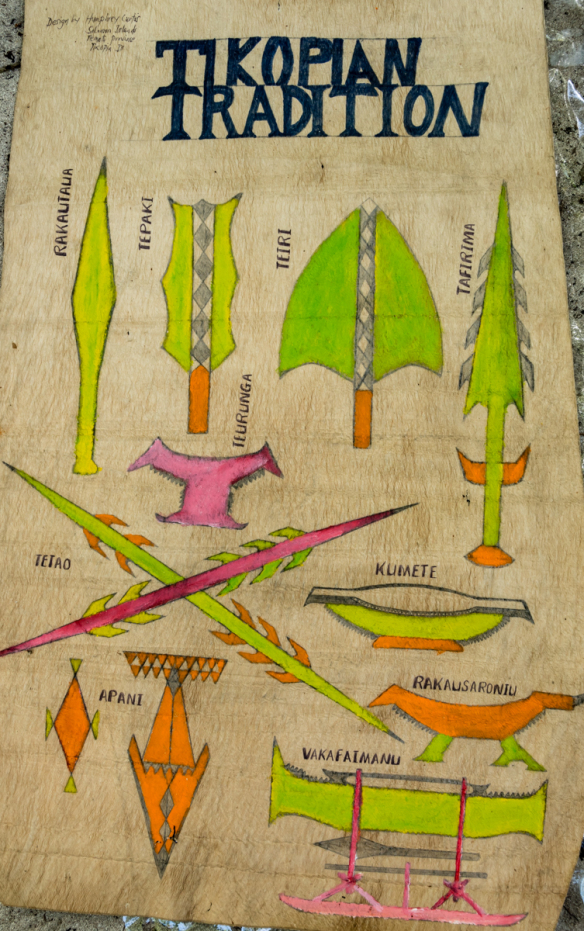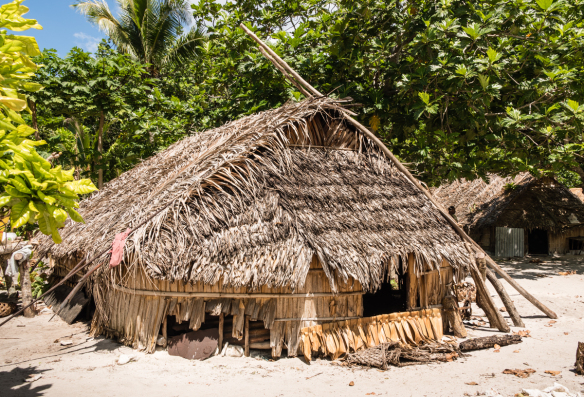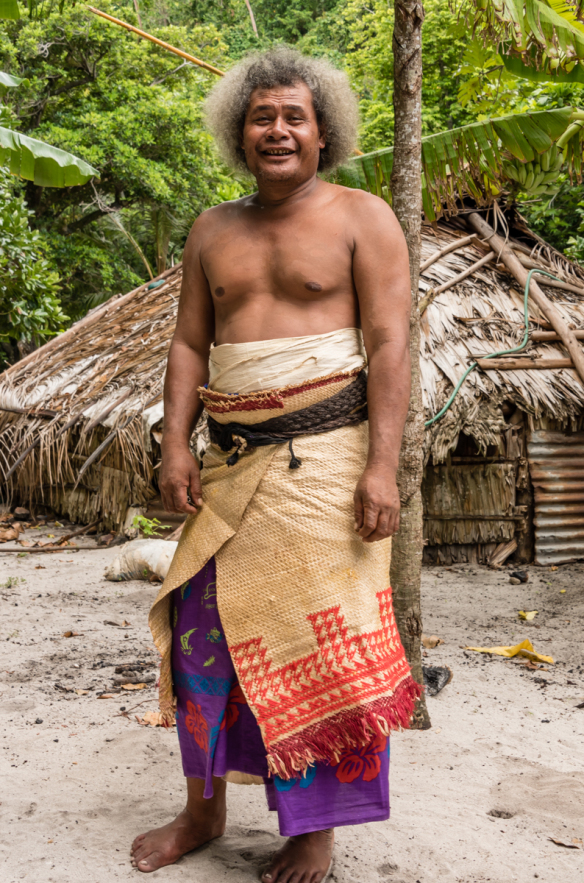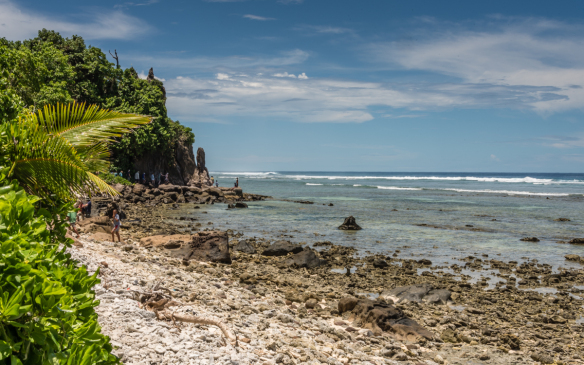Melanesia Expedition: Tikopia, Solomon Islands
 Sailing northwest from Vanuatu, we next visited Tikopia, a small island in the southeast corner of the Solomon Islands that, although it is part of Melanesia, is culturally Polynesian.
Sailing northwest from Vanuatu, we next visited Tikopia, a small island in the southeast corner of the Solomon Islands that, although it is part of Melanesia, is culturally Polynesian.
Sailing northwest from Vanuatu, we next visited the Solomon Islands, which received their independence in 1978 from Great Britain. The nation consists of six major islands and over 900 smaller islands in Oceania. The country is a constitutional monarchy with the Queen of Solomon Islands (currently Queen Elizabeth II) as its head of state. The region saw severe fighting between the Americans and the Japanese during World War II, particularly the Battle of Guadalcanal in 1942-1943 (which we visited a few days later).
 The beach on the edge of the western shore village of Matautu was very inviting.
The beach on the edge of the western shore village of Matautu was very inviting.
Tikopia is a small, high island in the southwestern Pacific Ocean. It is part of the Solomon Islands, in its furthest southeast region and is one of the countries that make up Melanesia, but it is culturally Polynesian. It is thought that a migration of Polynesians to the region took place sometime during the 10th century to the mid-13th century.
 The villagers set up a market for us with locally made artifacts, particularly carved wood objects and jewelry. It was a pleasure to purchase directly from the artisans – we bought a short spear/dagger from the wood carver in the lower left corner of the photograph.
The villagers set up a market for us with locally made artifacts, particularly carved wood objects and jewelry. It was a pleasure to purchase directly from the artisans – we bought a short spear/dagger from the wood carver in the lower left corner of the photograph.
 One of the tapa cloth drawings for sale illustrated traditional Tikopean artifacts; the design was signed “Humphrey Curtis, Tikopia Island, Temotu Province, Solomon Islands”
One of the tapa cloth drawings for sale illustrated traditional Tikopean artifacts; the design was signed “Humphrey Curtis, Tikopia Island, Temotu Province, Solomon Islands”

A traditional home in Tikopia, Solomon Islands, where the houses are built low to the ground to withstand storms and cyclones and to economize on building materials. Cooking is done in communal kitchens, outside of the homes.

The inside of the house has a tamped earthen floor covered by many mats woven from local plant materials. Note that one’s entrance to the house is by crawling through the low “door” on hands and knees and upon exiting, you go “backwards” so your feet are not shown to the people in the house.

The local chief gave us a warm welcome and remembered the ship’s visit three years ago when the villagers made many friends among the visitors from our ship.

We hiked an hour each way across the island to the east (and back), passing many fields of manioc (also known as cassava, or yuca), which is grown for its edible root and is a dietary staple.

Our hike took us across the island to a different view of the Pacific Ocean; beyond the point is the large volcanic crater that has filled with water and is now large lake – Lake Te Roto
Ready to learn more?
Determine whether life aboard The World is the right fit for you. Talk to one of our Residential Advisors today to learn more about this unique lifestyle, details of upcoming Journeys and Expeditions, and ownership opportunities.



